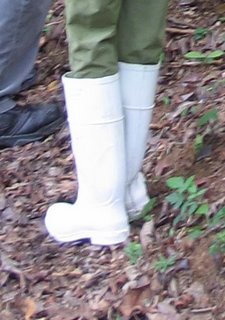Why we went...
Short answer: Molly thought that she might get a book out of it.
Long answer: A year or so ago, Molly got an email from David Campbell. David had been a graduate student of her father’s years ago and is now a botanist and professor at Grinnell College. For the last 15 years, he has been doing research in Belize. His email said that he’d be in Belize with a student for the month of June doing on his own research and that he thought Molly might be interested in meeting this guy, a Maya, who was a gardener of the forest, whatever that meant, who knew the uses of every plant that grew there.
Molly loved the idea. I thought that Belize sounded cool, but I wasn’t sure I wouldn’t get loony spending a month following a gardener around in the jungle. So, with the understanding that Molly might or might not get a book out of the visit, that I would have the freedom to wander around on my own, and that Ben and Rachel would spend a week with us sometime during the month, we went.
The forest gardener is Don Heriberto Cocom. Don Berto is a well known (in Belize) expert on the medicinal uses of native plants and is the proprietor of Masewal Forest Garden in Bullet Tree Falls, not far from San Ignacio. Thirty years ago he cleared and farmed this land, but there was a problem – with the land cleared for farming, he had no source for building materials and medicinal plants. So, he let the forest take over, sort of.
Here things get a bit unclear and obscured, possibly, by arguments among Mayanists. The issue is, how did the Maya of the classical period feed themselves? Cities like Tikal and Caracol may have had 40,000 people and to feed that many people, you have to have a pretty sophisticated system of agriculture. We know that the classical Maya grew corn, squash, beans, and chilies. And we know that they had only stone tools (no metal) and that they didn’t have draught animals. That means that chopping down trees for slash and burn agriculture would have been an exhausting challenge and plowing fields like good European and Asian peasants would have been impossible.
So, one theory suggests that they supplemented their small house gardens of corn, beans, etc. with forest gardens. The idea is that in these forest gardens the Maya selectively encouraged the growth of trees and plants that they found useful and discouraged the growth of trees and plants that they didn’t find useful. The forest gardens would have looked like plain old jungles to us, but what grew there would have been shaped by the choices that the Maya gardeners made.
So we have a couple of questions. A) Did the classical Maya supplement their diets with the products of forest gardens? B) Would that have been enough to sustain their cities? and C) Is Sr. Cocom a modern forest gardener, following the many thousand years old traditions of his people?
David’s research is related to question A. He’s done a study that showed that there was a higher percentage of trees useful to the Maya in plots that were probably once forest gardens than in plots that were probably not forest gardens. (I’m over-simplifying here.) While we were there, he had a student and an assistant measuring the diameter of trees in the pastures owned by modern Maya farmers. They’d measure the trees and record the kind of tree it was and will now somehow crunch the data to determine if there are more “useful” trees growing in those pastures than one would expect. In other words, are contemporary Maya farmers still selecting which plants grow and which ones don’t?
Given the heat and the humidity and the fact that there were bulls in some pastures and thousands of ticks in others, this was grueling work. But it’s all for science, right?
So a variety of people, including David, are working on the answer to question A, no one seems to know the answer to question B, and I’m not sure I ever got a straight answer to question C. I asked Sr. Cocom if he selects the trees to grow in his forest and he says no, he just let’s things grow. David says that Cocom says that he doesn’t do anything, but that he’s seen Cocom kicking rocks into a circle around the base of certain trees to protect them from fire (periodic burning was one of the selection processes that ancient – and modern – Maya may have used). While we were there Sr. Cocom was planting cedar seeds in a special bed intending to raise seedlings that he would later transplant to other places in his forest.
In any case, Sr. Cocom is a very nice man, who, as advertised, knows a huge amount about almost every plant in his forest, including their uses and their names in Latin, English, Spanish, and Mayan, and who is incredibly patient and willing to explain what he knows to anyone who is interested and willing to listen.
Molly listened for three days and found that that was enough. She spent most of the rest of the time wandering around in ruins with me and doing drawings for a possible book about the Maya. When we got back, she went to the library and found that there are already several very adequate books about the Maya, so her book probably won’t happen. Often things don’t go as planned.













